Focusing on building an audience instead of capturing leads
Constantly generating and converting leads can feel a lot like being stuck in a hamster wheel. Each month, we're running faster and faster to refill the marketing funnel from scratch, and each month, we lose more and more "leads" as they leak out of the funnel.
One way to free ourselves from this hamster wheel is to zoom out and start building an audience. If you're running a business, getting more customers will always be a critical goal. But focusing on an engaged audience, rather than just leads, can help generate more customers in the long term because the audience feeds and builds on itself. It's an investment for the future!
Why focus on audience?
The main benefit of an audience-centric approach is that your marketing efforts are cumulative, like a snowball rolling down a hill. A bigger audience means more people talking about your company and sharing your content with colleagues, which, of course, leads to more people discovering your content, which leads to more sharing, and so on.
Before we dive any deeper, here are a couple key definitions:
A lead is someone who has expressed some level of interest in what you do, a potential customer who you're trying to convert. The most valuable leads are those who are most likely to become customers, and a lead who's not on the path to becoming a customer is a distraction.
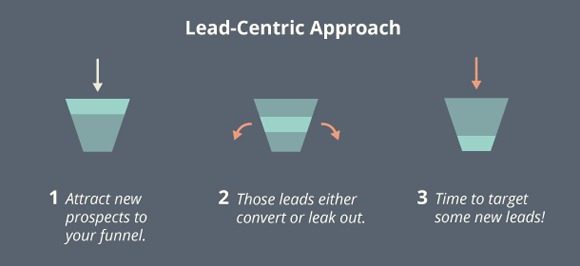
An audience member is someone who consumes your content on a regular basis via your blog, email lists, social media, and so on. Highly engaged audience members will share your content and spread the word about your company, even if they're not on the path to becoming a customer anytime soon.
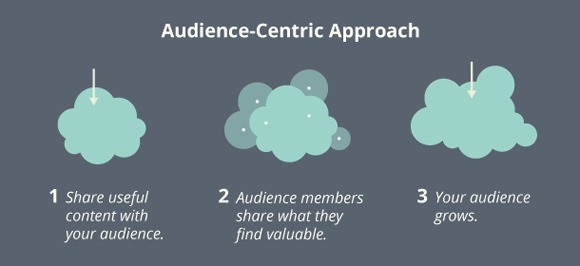
Every person who encounters your brand can be an advocate and source of referrals. Instead of watching lost leads leak out of the funnel forever, an audience-centered approach converts everyone we "meet" into fans. The collective power of this audience cloud is enormousand feeds the funnel.
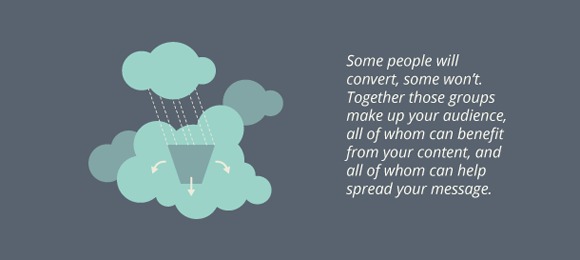
How can you start building and engaging your audience?
Politely ask for email addresses
You can be pretty forceful about collecting email addresses if you want to (for example, by gating your content with an email form so people have to subscribe in order to gain access to your offerings). But since our primary goal is to create trust, we strive to offer delightful, valuable content that makes people want to subscribe and keep track of what we're doing.
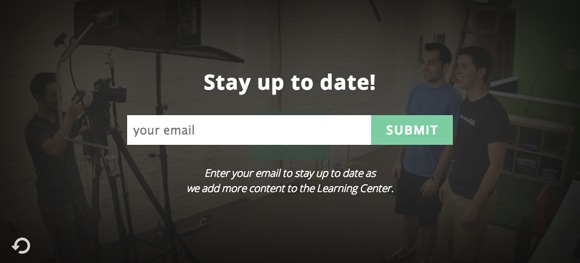
In the Wistia Learning Center, we use post-roll email forms at the end of each video. These forms do generate new subscribers for us, but just as importantly, they make sense for the person on the other end. It's unlikely anyone is searching for a way to subscribe before viewing the content, but afterwards, the form makes sense contextually.
The softer approach may cost us in terms of subscriber numbers, but it's proven to be a better way to establish trust over time.
Make it obvious what your company does
Prominently include the basic details of your company and/or product anywhere you're placing content. This both establishes your credentials and means no one will leave your page wondering "what the heck is a Wistia?" As a bonus, your content marketing won't feel sneaky if you're super upfront about who's producing it! Trello's blog does a nice job with this:

Focus on teaching rather than selling
Teaching people engages them in a way that selling just can't. Once you commit to building an audience, you are suddenly freed from the need to pitch your product constantly and can focus on sharing your learnings and providing guidance.
This approach is especially important for the people in your audience who are not likely to become customers. When we instead regard these people as audience members, we can shift our focus to keeping them engaged and informed, and they (and we) will be happier for it.
First Round Capital blogs about business lessons they and other companies have learned. Their post about Airbnb's growth is a great example.
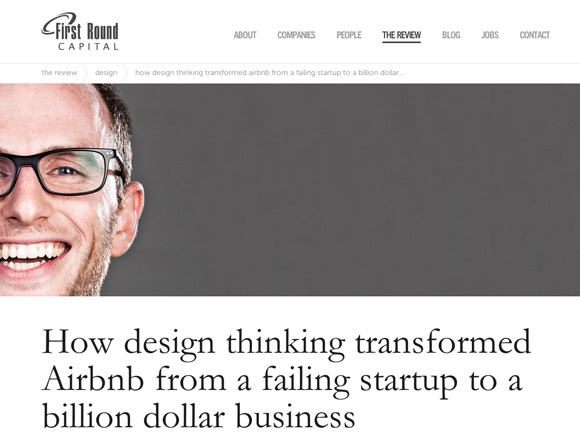
Figure out what your audience is interested in learning
There are plenty of methods, both subtle and obvious, for gathering feedback from your audience. Analytics are, of course, a big one: which content is most popular? Where are you provoking discussion? What's getting shared a lot? Think about what made that content successful. Was it the format? The subject matter?
Decide which analytics goals are most important to you and think about what qualities your most successful content shares. Continue learning by listening to what your audience is telling you in comments, tweets, support requests, and so on.
You can also ask people directly about what they're interested in learning. Moz did this on their blog back in 2010, and based on the comments section alone, they seem to have gotten a ton of useful feedback.
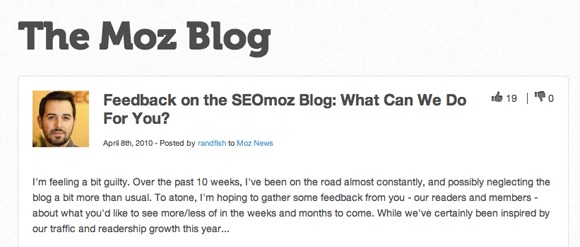
Offer a variety of avenues to connect
Not everyone will be ready to share their email address with you right away, and that's okay. Everyone prefers to keep up with content in different ways, whether it's email newsletters, social media, RSS, or something entirely separate. Let people subscribe to your content on their terms.
If you're limited in the number of channels you can maintain, invest your time in totally owning the ones that you deem most important to your audience (you can use analytics or be forthcoming about asking where they'd like to be able to follow you).
iDoneThis's blog offers a variety of ways to subscribe, all of which are well-maintained and consistent in voice. Their inclusion of subscriber numbers is a nice touch, too:
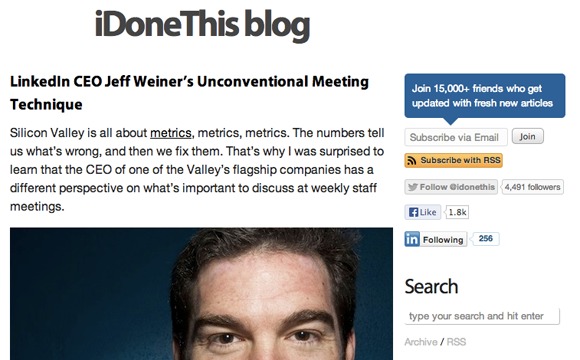
Publish on a consistent schedule
One great way to develop a returning audience is to publish a series on a regular schedule. Webcomics tend to do this really well, opting to publish new content on set weekdays so people know when to check the site, and many music magazines have weekly podcasts.
Businesses can do this too: everyone loves Moz's Whiteboard Friday presentations, and Pardot has built a following for their weekly webinars. For email marketers, Litmus's monthly data share videos are an example to live by:
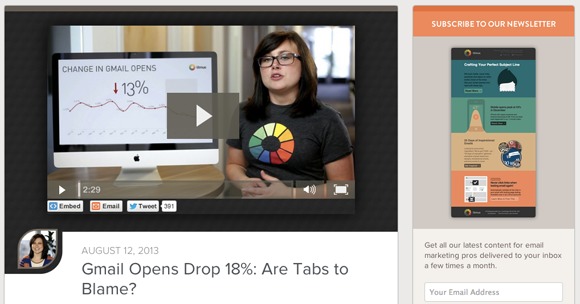
Focusing on building an audience instead of just capturing leads requires only a relatively small shift in mindset, and the long-term, compounding benefits make it well worth the investment. What strategies have you used to build an audience over time? What companies do you think do a great job engaging their audience instead of focusing on leads alone? Wed love to hear your thoughts in the comments!
SOURCE: http://bit.ly/GMG9ih, this factual content has not been modified from the source. This content is syndicated news that can be used for your research, and we hope that it can help your productivity. This content is strictly for educational purposes and is not made for any kind of commercial purposes of this blog.